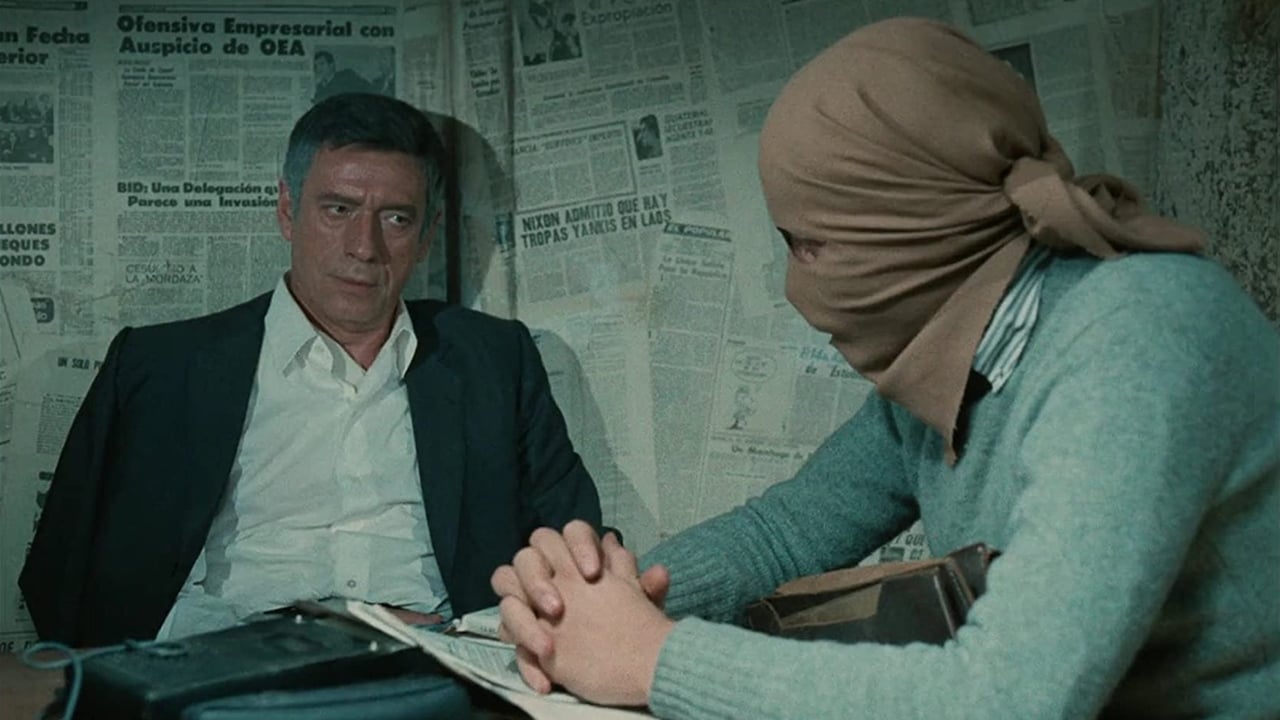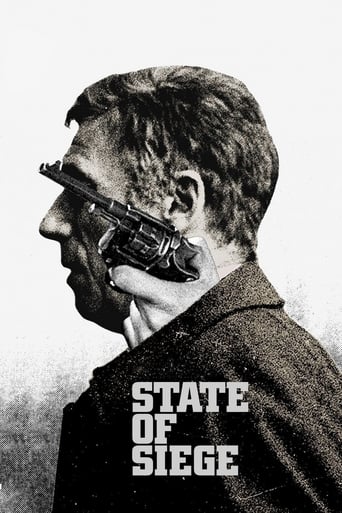

The greatest movie ever!
... View MoreGood concept, poorly executed.
... View MoreThe film creates a perfect balance between action and depth of basic needs, in the midst of an infertile atmosphere.
... View MoreIt is an exhilarating, distressing, funny and profound film, with one of the more memorable film scores in years,
... View MoreI am a 'Z' and 'The Confession' fan, have been since a teenager. I am about to watch this for the first time. Skimming these reviews, I saw so many people bemoaning the lack of a DVD release, I thought to make note that this film is now (June 2017) streaming on Filmstruck (a service that includes Criterion films). Having read some reviews, I am expecting something truly extraordinary. I am rating it 8 of 10 based on my previous encounters with Costas-Gravas.
... View MoreIn what could be considered a follow up to his classic Z, Costa Gavras yet again tackles the political thriller genre with great mastery.In Uruguay, an American with a somewhat vague and mysterious background but who is held in high esteem by the ruling powers is kidnapped. The kidnappers start interrogating him and through this backdrop, we are introduced to the struggles between leftist rebels and a right wing government in the Latin American country.As I said before, the film is very similar to one of director Gavras's earlier efforts, Z. Like that film, this too depicts the struggle between two powers, one represented by a US-backed right wing government, the other a slightly leftist liberal resistance movement. Although the government is shown in a bad light here, neither side is overly demonized or depicted heroically. Instead, both have their motives which are ultimately quite noble so the viewer can identify with both. It is this tendency to show both sides of the story that makes Gavras a great storyteller and why both this and Z succeed so well.Like in Z, Gavras likes to keep the camera at a distance giving us a good overview of events like for example riots in the street and how the police deal with them. The film also keeps away from unnecessary subplots and instead focuses on the story, just the way I like it. Music is used minimally and when it is used, it is effective, instead of having a constant background jingle.If you liked Z, you will like this and if you like this, you will like Z. Or if you just like a good intelligent political thriller, this is the film for you.
... View MoreState of Siege is an exceptional account of how the Uruguayan underground revolution (Tupamaros) developed an extremely challenging resistance against both Uruguayan dictatorship and other parties such as USA and multi nationals who financed such dictatorship. The film describes in great detail the meticulous process used during the resistance, which in turn was adopted in other parts of Latin-America and Asia. Having lived in Uruguay during this time (1970s)i was amazed at the accuracy of the story and the ability by the story teller and the characters to convey a story/narrative that at the time of filming was very much a well hidden secret by both the establishment and its supporters, and the Tupamaros. Great research, and a great opportunity for those who are interested in Latin America political system as well as getting an effective snapshot of a time in history.
... View MoreI agree that this film should be released on DVD. It is a great companion piece to Z and Missing.Costa-Gavros managed to produce a stinging indictment of US involvement in South American politics, without drawing his villains as caricatures. His characters, policemen and revolutionaries, come off as profoundly human, flawed but not themselves monsters, though they are involved in monstrous acts. The torture scenes are grueling, and were probably as responsible for the film's official reception.I saw this at the age of 15, when it was in the theaters. I confused it with the Eric Ambler novel of the same name. It had a profound personal influence on me. I was able to rent it once, about 15 years ago but haven't run across it since.
... View More